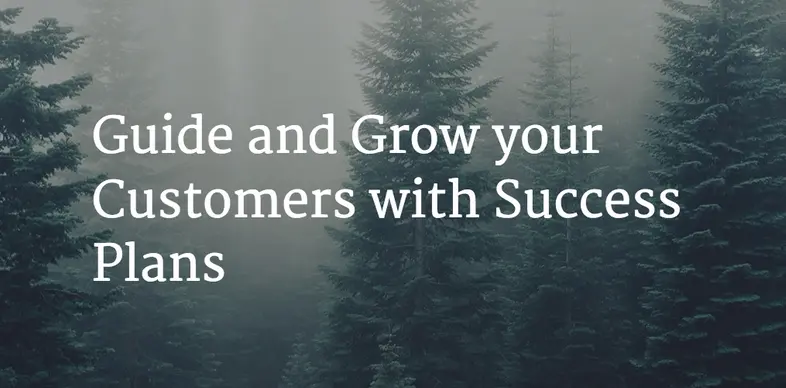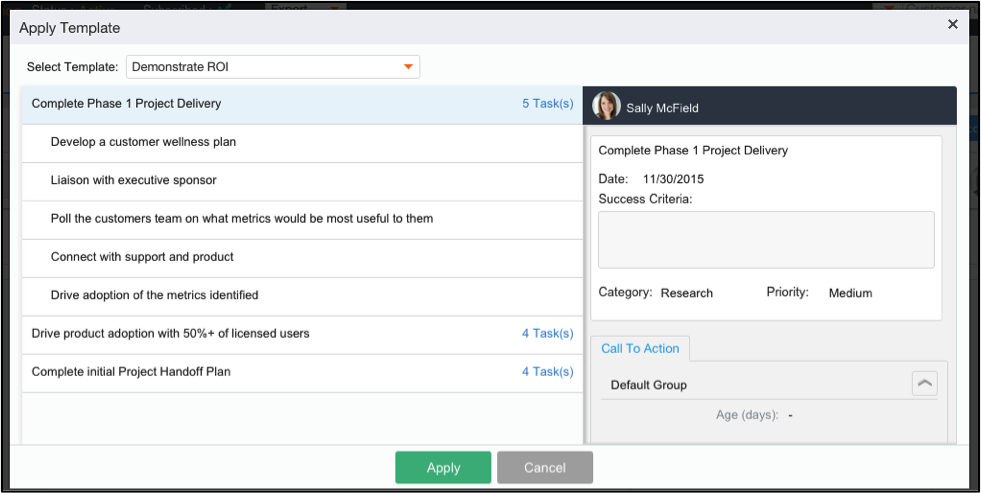Gainsight (and any good Customer Success tool) claims to help you end your days of customer fire-drills and replace them with sunny days of skipping through fields of daisies hand-in-hand with your customer.
That may be slightly hyperbolic but the idea is that Gainsight aims to help you shift from reactive customer management to proactive. We start this shift by providing the most relevant information about what’s going on with your customers on the Customer 360 page so you have the visibility to see what’s coming. Then our automated Calls-to-Action (CTAs) will proactively alert you based on meaningful trends in your data. This is the key step to get you ahead of the fires that might erupt at your customers and also capitalize on the opportunities that present themselves.
Success Plans were designed to give you the tools needed to take your proactive stance to the next level. They give you the structure for you and your team to take a longer-term strategic look at how you want to guide and grow your customers. They are the place where you can develop, track, and realize the exact path through that daisy field you’ll be skipping through with your customer.
Below, we’ll walk you through three scenarios where you can apply Success Plans to start making your own daisy field-skipping a reality.
Scenario 1: Capture New Customer Use-cases or Goals
When a customer buys your product or service, they typically have bought it for a specific purpose(s). Record what those use cases were in Success Plans to keep your teams aligned on the customer’s priorities across sales and services handoffs and ensure you are executing to support those use cases.
Our own usage of Gainsight, as described by our VP of Customers Success, Allison Pickens, is similar to this scenario.
Gather and record stakeholder input with the Collaboration page
Use the Collaboration page within your plan to gather the information from those involved in the Sales cycle. The comments and questions will be preserved as part of the plan so you can always see who contributed.
Scenario 2: Implement a Strategic Account Plan
Pulling a page out of the Account Management book, formulating and executing a Strategic Account Plan can lay out your goals and strategies with the customer for that year. It’s an excellent way to be more strategic with your customer and also give visibility to your organization (and your boss) about what you are doing.
Leverage proven methods and strategies with Success Plans Templates
Apply a Success Plan Template to leverage the proven strategies and methods that have been distilled by your team.
Scenario 3: Develop a Joint-Objectives Plan during your QBR
During your next QBR or customer meeting, brainstorm and agree on a Joint-Objective plan with your customer to execute in the next quarter. Gain your customer’s buy-in and align your and their resources to accomplish concrete goals.
Demonstrate your efforts with Objectives
With the Success Plan Objectives, you can record the specific goals you set with your customer, all associated tasks, owners and outcomes of each. Have a complete, organized history of the efforts you and your team have undertaken to realize your customer’s objectives and share it back with your customer.


